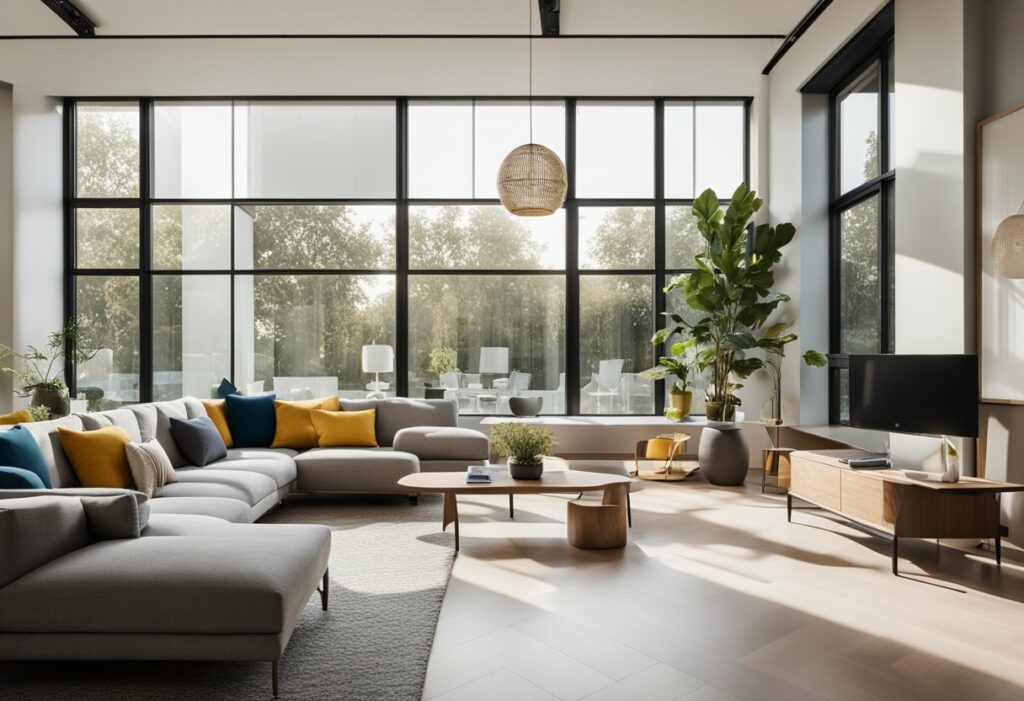International Style Interior Design: How to Achieve a Modern and Sleek Look
If you’re looking for a sleek, modern interior design style that emphasises functionality and universality, you might be interested in international style interior design. This style emerged in Europe during the 1920s and 1930s, and it quickly became popular in the United States as well. Today, international style interior design remains a popular choice for those who appreciate the beauty of simplicity and minimalism.
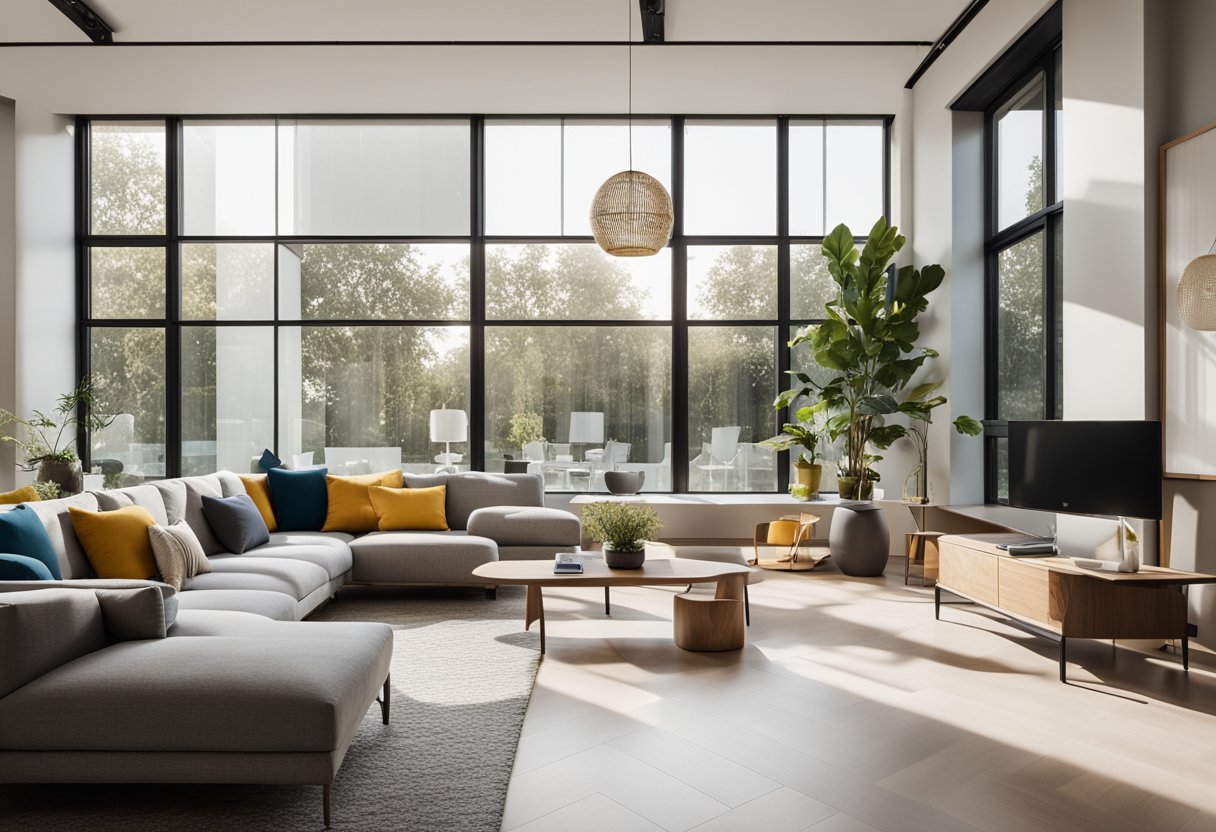
Defining international style interior design can be a bit tricky, as it encompasses a wide variety of design elements and principles. At its core, however, this style is characterised by its focus on function over form. International style interior design often features simple lines, neutral colours, and an absence of decoration or ornamentation. This style also tends to favour modern materials like steel, glass, and concrete, which can help create an open and airy feel in a space.
Key Takeaways
- International style interior design is a sleek, modern design style that emphasises functionality and universality.
- This style emerged in Europe during the 1920s and 1930s and quickly became popular in the United States as well.
- International style interior design is characterised by its focus on function over form, simple lines, neutral colours, and an absence of decoration or ornamentation.
Defining International Style
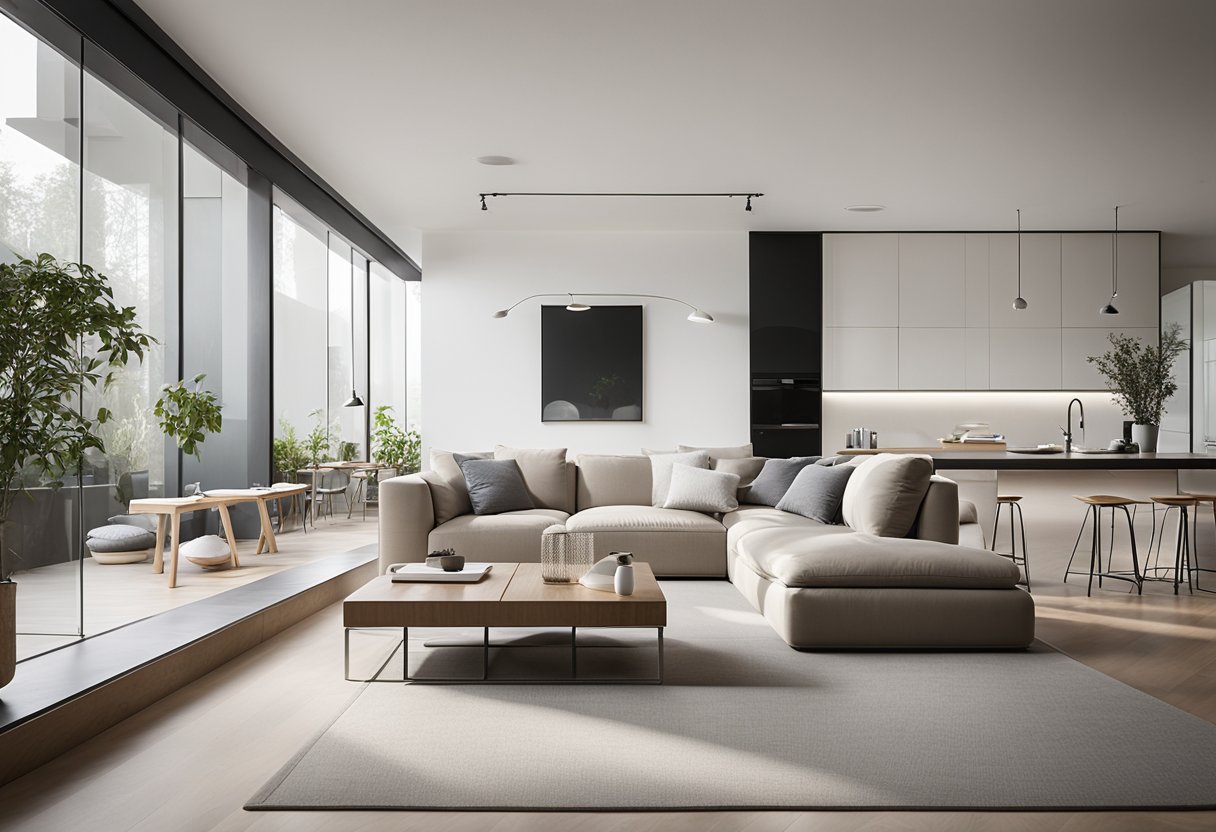
If you are interested in interior design, you may have heard of the International Style. This design movement emerged in the early 20th century and is still influential today. In this section, we will explore the historical context, architectural principles, and key figures of International Style interior design.
Historical Context
International Style interior design emerged in Europe during the 1920s and 1930s. This was a time of great change and experimentation in the arts, architecture, and design. The movement was closely related to modernist architecture, which emphasized function over form and the use of new materials and construction techniques.
One of the key institutions of the International Style was the Bauhaus school in Germany. Founded by Walter Gropius in 1919, the Bauhaus brought together artists, designers, and architects to develop a new approach to design. The school’s emphasis on craftsmanship, simplicity, and functionality was a major influence on International Style interior design.
Architectural Principles
International Style interior design is characterized by its focus on function over form. This is expressed through simple lines, an absence of decoration, and a preference for new materials such as steel, glass, and concrete. The movement also emphasized open interior spaces, with an emphasis on natural light and a sense of flow between rooms.
One of the key figures in International Style interior design was Ludwig Mies van der Rohe. His famous maxim “less is more” encapsulated the movement’s approach to design. Another important figure was Le Corbusier, who developed the concept of the “machine for living” – a building that was designed to meet the needs of its inhabitants in a rational and efficient way.
Key Figures
In addition to Mies van der Rohe and Le Corbusier, there were many other important figures in the International Style movement. Josef Albers was a painter and designer who taught at the Bauhaus and later at Yale University. Henry-Russell Hitchcock was an architectural historian who co-wrote the influential book “The International Style” with Philip Johnson.
The Museum of Modern Art in New York played a key role in promoting International Style interior design. In 1932, the museum held an exhibition called “The International Style: Architecture Since 1922”, which showcased the work of Mies van der Rohe, Le Corbusier, and others. The exhibition was a huge success and helped to popularize the International Style in the United States.
In conclusion, International Style interior design is a form of modern minimalism that emphasizes function over form. The movement emerged in Europe in the 1920s and 1930s and was closely related to modernist architecture. Ludwig Mies van der Rohe, Le Corbusier, and other key figures developed the movement’s architectural principles, which emphasized simplicity, open spaces, and new materials.
Elements of International Style in Interior Design
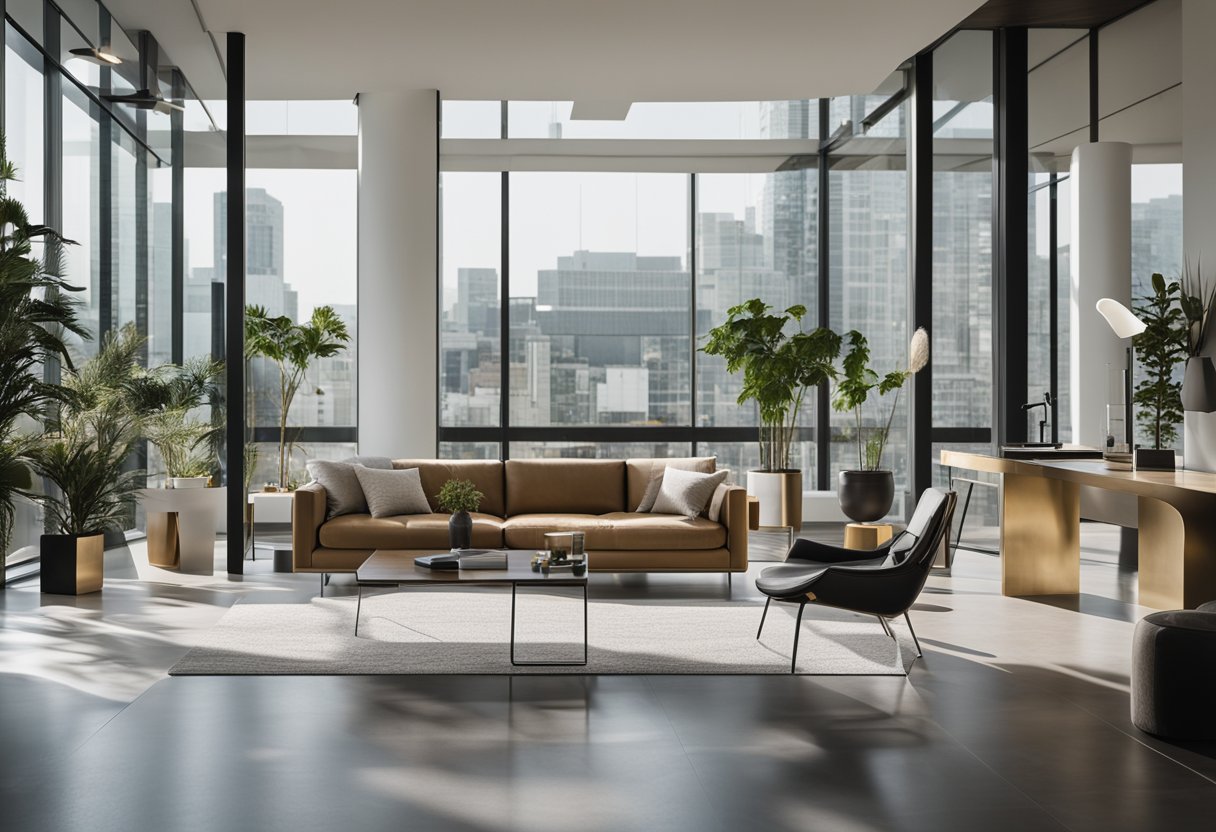
If you’re looking to incorporate International Style into your interior design, there are a few key elements you should keep in mind. This style is all about minimalism, functionality, and simplicity. Here are some of the key elements of International Style in interior design:
Material and Texture
International Style is characterized by the use of modern materials like steel, glass, and concrete. These materials are often left exposed, adding an industrial feel to the space. You can also incorporate materials like chrome and leather to add texture and interest to the space.
Colour and Light
International Style is all about using natural light to illuminate the space. This means that you should choose light colours for walls and furniture to help reflect light and create a bright, airy feel. You can also incorporate pops of colour through artwork or accessories to add interest to the space.
Furniture and Layout
When it comes to furniture, less is more in International Style. Choose furniture with clean lines and simple shapes to create a streamlined look. Open floor plans are also a key feature of this style, allowing for functional spaces that flow seamlessly from one area to the next.
Incorporating International Style into your interior design can create a modern, functional space that is both beautiful and practical. By using modern materials, natural light, and simple furniture, you can create a space that is both stylish and functional.
Frequently Asked Questions
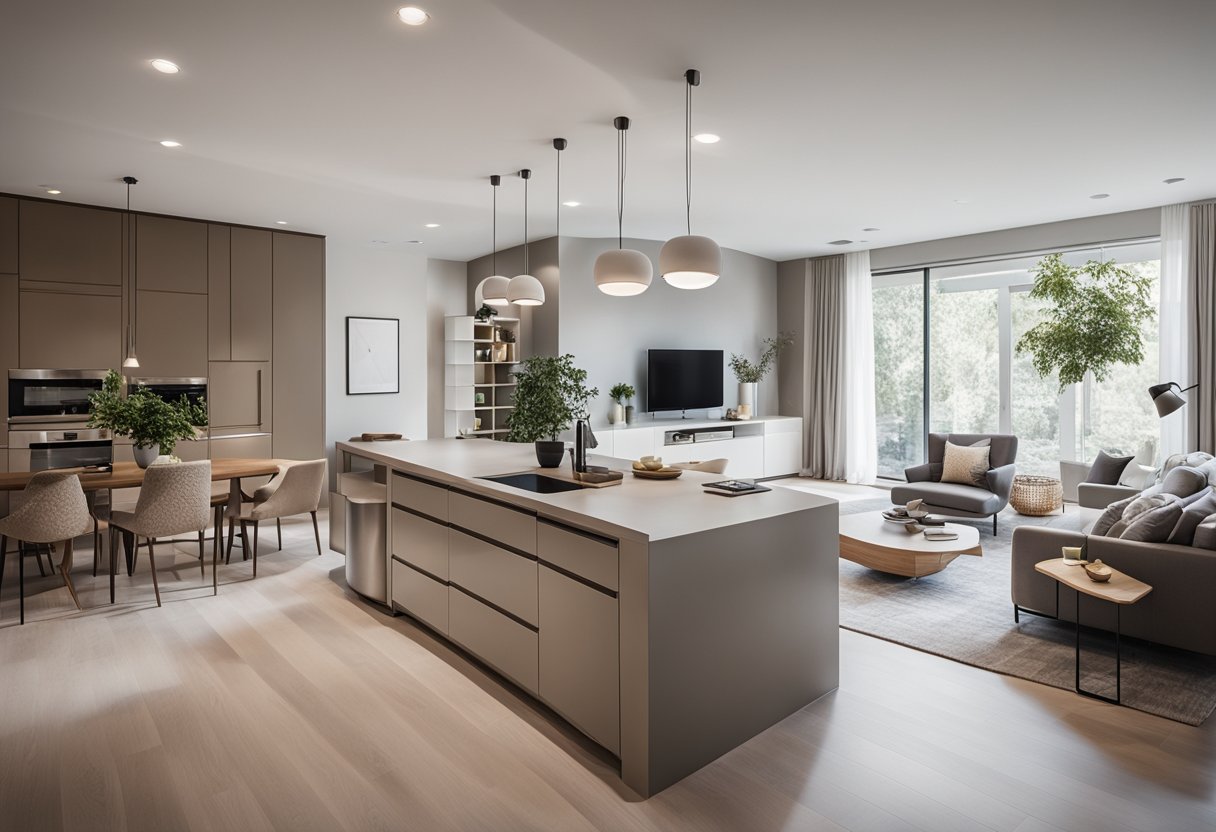
What are the defining features of International Style in home décor?
International Style in home décor is characterized by its focus on function over form. This means that the design elements are chosen for their practicality rather than their ornamental value. The style is often expressed through simple lines, geometric shapes, and an absence of decoration. Neutral colours such as white, black, and grey are commonly used to create a clean and minimalist look.
How can one integrate International Style furnishings into a contemporary living space?
One way to integrate International Style furnishings into a contemporary living space is to use them as statement pieces. For example, a sleek and simple International Style sofa could be paired with colourful throw pillows or a vibrant rug to add some personality to the space. Another option is to mix and match International Style furnishings with other modern design elements to create a unique and eclectic look.
What distinguishes International Style architecture from other modern design movements?
International Style architecture is characterized by its use of industrial materials such as steel, concrete, and glass. The style emphasizes functionality, simplicity, and the use of open spaces. Unlike other modern design movements, International Style architecture rejects ornamentation and decoration in favor of clean lines and geometric shapes.
Could you provide some iconic examples of International Style in residential interiors?
Some iconic examples of International Style in residential interiors include the Barcelona Pavilion designed by Ludwig Mies van der Rohe, the Villa Savoye designed by Le Corbusier, and the Farnsworth House designed by Mies van der Rohe. These buildings showcase the use of industrial materials, clean lines, and open spaces that are characteristic of International Style.
What principles guide the selection of art within an International Style aesthetic?
The selection of art within an International Style aesthetic should reflect the style’s emphasis on simplicity and functionality. Artwork should be chosen for its clean lines, geometric shapes, and neutral colours. Abstract art is often used to complement the minimalist aesthetic of International Style.
How does International Style influence the layout and flow of interior spaces?
International Style influences the layout and flow of interior spaces by emphasizing open and flexible spaces. Rooms are often designed to be multifunctional, with minimal partitions and walls. The style also emphasizes the use of natural light and views to create a sense of openness and connection to the outdoors.

